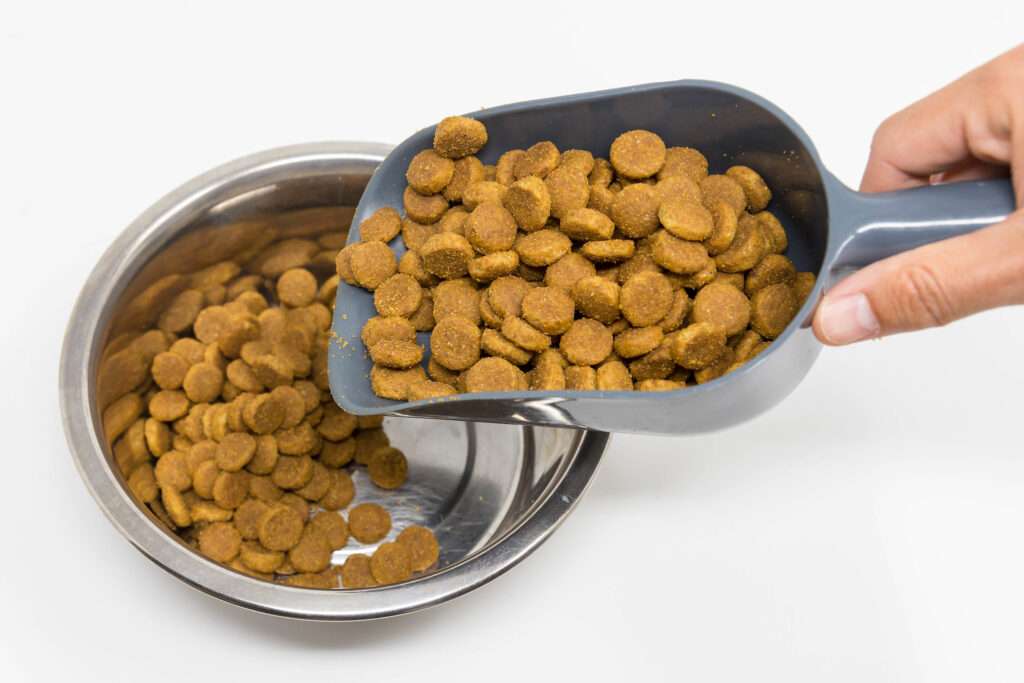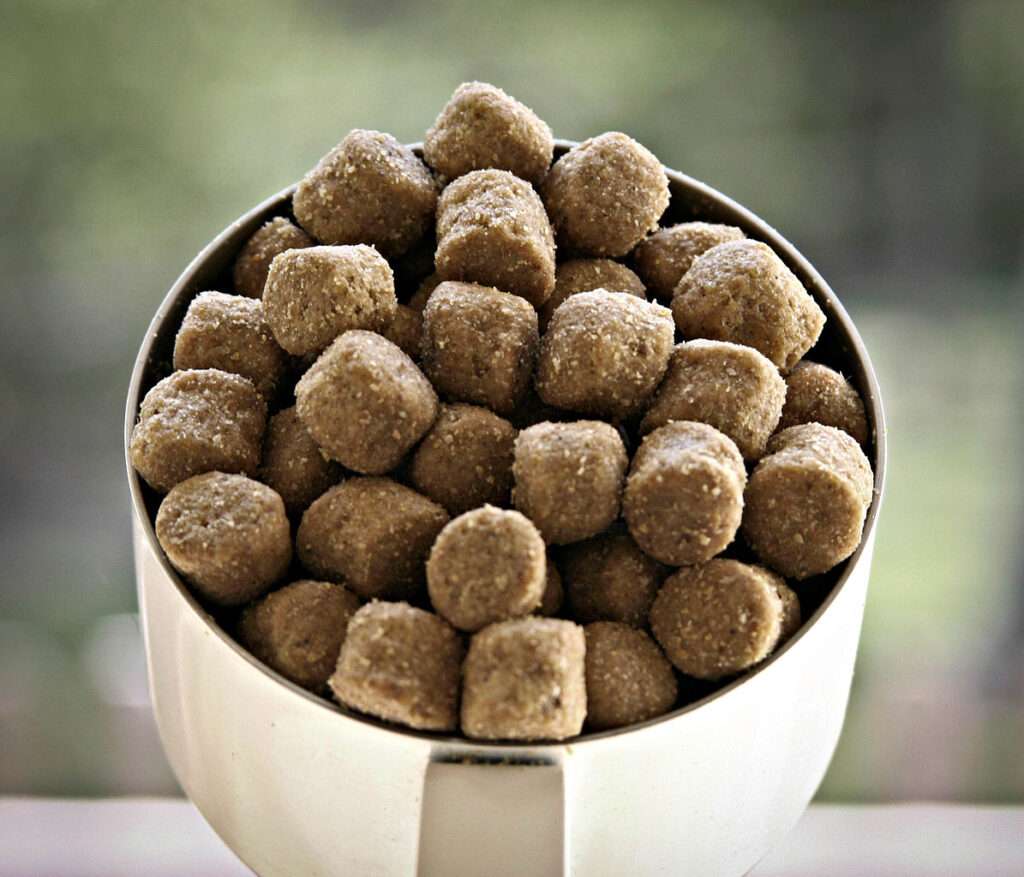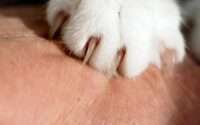How Many Cups in a Pound of Dog Food? The Must-Know Answer for Every Pet Owner!
We, as dog owners, all strive to provide our beloved pets with the best possible care, and this includes their diet and nutrition. But how do we ensure that we’re measuring their food correctly? Is it better to measure by weight or by volume? And, most importantly, how many cups are in a pound of dog food?
This article will provide you with all the necessary details on measuring dog food accurately. We’ll discuss the advantages and disadvantages of both weight and volume measurements, helping you determine the best method for your furry friend’s needs.
Understanding Dog Food Measurements

Dog food can be measured in two ways: by weight (pounds, ounces) or volume (cups). While measuring by weight is more accurate, measuring by volume is more convenient for most pet parents. However, it’s essential to note that different types of dog food have different densities, which can affect the number of cups in a pound of dog food.
For instance, a pound of dry dog food will generally yield around 4 cups, while a pound of wet dog food may yield only 2 cups. This is because wet dog food contains more water, making it less dense than dry dog food. Overall, it’s crucial to be consistent in measuring your dog’s food, whether by weight or volume, to ensure they’re getting the right amount of nutrition.
How to Measure Dog Food by Weight
Being a responsible pet owner entails ensuring that your dog is receiving the appropriate amount of food. To achieve this, measuring their food by weight, rather than volume, is one of the most accurate methods. Measuring by weight ensures that you’re providing your dog with the exact amount of food they need, and can help prevent overfeeding or underfeeding.
So, how do you measure dog food by weight? It’s actually quite simple. All you need is a kitchen scale and a measuring cup. Here’s how to do it:
- Put your measuring cup on the kitchen scale and zero it out.
- Fill the measuring cup with the desired amount of dog food.
- Check the weight on the kitchen scale to ensure that it matches the recommended weight for your dog’s size and activity level.
Measuring by weight also has other advantages, such as being able to more accurately track your dog’s calorie intake, and making it easier to adjust their food portions if needed. To ensure that your dog is receiving the appropriate amount of food, measuring by weight is the recommended method.
How to Measure Dog Food by Volume
While measuring dog food by weight is the most accurate method, it’s not always the most convenient. That’s where measuring by volume comes in. Measuring cups are an easy and accessible tool for measuring your dog’s food, but it’s important to note that measuring by volume can be less accurate than measuring by weight.
When measuring by volume, it’s essential to use a standard measuring cup, rather than a random household object like a coffee mug or soup ladle. Using a consistent measuring cup ensures that you’re always measuring the same amount of food, regardless of the size or shape of the container.
It’s important to keep in mind that the number of cups in a pound of dog food is not a fixed measurement, and can vary depending on factors such as the brand, type, density, and size of the kibble. Always consult the food label to determine the recommended serving size for your dog’s weight and activity level.
While measuring by volume may not be as precise as measuring by weight, it can still provide a good estimate of your dog’s food portions. Just be sure to adjust the volume measurements as needed to ensure your dog is getting the appropriate amount of food.
How Many Cups in a Pound of Dog Food

The quantity of cups in a pound of dog food can vary depending on multiple factors, including the type and brand of the food. As a general rule, there are roughly 4 cups of dog food in a pound. Nonetheless, it’s essential to keep in mind that this number can fluctuate depending on various elements, such as the kibble’s shape and size and the food’s density.
It’s essential to keep in mind that the recommended serving size for your dog may differ from the standard measurement listed on the food label. Determining the appropriate amount of food for your dog depends on several factors, including their age, weight, activity level, and health status.
To ensure that your dog is getting the appropriate amount of food, always consult the food label and your veterinarian to determine the recommended serving size. And remember, measuring by weight is the most accurate method for ensuring that your dog is getting the right amount of food, regardless of the number of cups in a pound.
Understanding Dog Food Labels
When it comes to measuring your dog’s food, it’s important to understand the information listed on the dog food label. The label provides important details about the food’s nutritional content, serving size, and feeding instructions.
Here are a few key terms to look for on a dog food label:
- Guaranteed Analysis: This section lists the minimum and maximum percentages of crude protein, fat, fiber, and moisture in the food. These percentages can help you determine whether the food meets your dog’s nutritional needs.
- Ingredients: This section lists the ingredients in the food, with the most abundant ingredient listed first. When choosing dog food, it’s recommended to opt for protein sources of the highest quality, such as meat, fish, or poultry, while avoiding products containing fillers or artificial preservatives.
- Feeding Instructions: This section provides guidelines for how much food to give your dog, based on their weight and activity level. Be sure to follow these guidelines, and consult with your veterinarian if you’re unsure about how much to feed your dog.
By understanding the information on a dog food label, you can make informed decisions about what to feed your dog and how much to feed them.
Factors to Consider When Measuring Dog Food
To guarantee that your dog is consuming the appropriate quantity of food, it’s crucial to bear a few essential factors in mind while measuring their meals.
- Your dog’s weight: The amount of food your dog needs will depend on their weight. Be sure to consult with your veterinarian to determine the appropriate serving size for your dog.
- Your dog’s activity level: If your dog is highly active, they may need more food than a sedentary dog. Take your dog’s activity level into account when measuring their food.
- The type of food: The number of cups in a pound of dog food can vary depending on the type of food. Wet food, for example, is denser than dry kibble, so there will be fewer cups in a pound of wet food than in a pound of dry food.
- Treats and table scraps: If you’re feeding your dog treats or table scraps in addition to their regular meals, be sure to adjust their food portions accordingly to avoid overfeeding.
By considering these factors, you can ensure that you’re providing your dog with the appropriate amount of food to meet their nutritional needs. Remember, measuring by weight is the most accurate method, but measuring by volume can also provide a good estimate of your dog’s food portions. Always consult with your veterinarian if you’re unsure about how much to feed your dog.
Recommended Daily Food Intake by Dog Weight
| Weight of Dog | Cups of Food Per Day | Cups per Pound |
|---|---|---|
| 5 lbs | 1/3 – 1/2 | 8 – 12 |
| 10 lbs | 1/2 – 1 | 4 – 8 |
| 20 lbs | 3/4 – 1 1/2 | 2 – 4 |
| 30 lbs | 1 1/4 – 2 | 1 1/2 – 3 |
| 40 lbs | 1 1/2 – 2 1/2 | 1 1/5 – 2 1/2 |
| 50 lbs | 2 – 2 1/2 | 1 1/5 – 2 |
| 60 lbs | 2 1/4 – 3 | 1 – 1 1/2 |
| 70 lbs | 2 1/2 – 3 1/2 | 1 – 1 1/5 |
| 80 lbs | 2 3/4 – 3 3/4 | 3/4 – 1 1/2 |
| 90 lbs | 3 – 4 | 3/4 – 1 1/4 |
| 100 lbs | 3 1/4 – 4 1/2 | 3/4 – 1 |
Conclusion
In conclusion, measuring your dog’s food is an important part of ensuring their overall health and well-being. Regardless of whether you opt to measure your dog’s food by weight or volume, it’s crucial to ensure that they’re receiving the proper amount to fulfill their nutritional requirements.
Calculating the appropriate portion size for your dog requires considering several factors, including their weight, activity level, and type of food. For optimal results, it’s vital to seek guidance from your veterinarian to ascertain the ideal serving size for your dog. Additionally, carefully reviewing and understanding the information on the dog food label is crucial in providing them with the best possible nutrition.
It’s worth noting that there’s an estimated 4 cups of dog food in one pound, though this can be subject to variation based on a range of factors. Precisely measuring your dog’s food can play a crucial role in guaranteeing they receive the appropriate amount to keep them healthy and content. After all, a little extra attention to detail can go a long way in promoting your furry friend’s overall wellbeing.
At BarkLikeMeow, we understand that every dog is unique, and their nutritional needs can vary. At our core, we are dedicated to offering a wealth of knowledge and tools to ensure that you are equipped with everything you need to provide the highest level of care for your beloved companion.
Frequently Asked Questions
Q: How do I measure dog food by volume?
A: You can measure dog food by volume using cups. One cup of dog food is equal to 8 fluid ounces or 224 grams.
Q: How many cups in a pound of dog food?
A: The number of cups in a pound of dog food varies depending on the brand and type of food. As a general guideline, a pound of dry dog food equals approximately 4 cups.
Q: Can I use a kitchen scale to measure dog food?
A: Yes, you can use a kitchen scale to measure dog food by weight. One pound of dog food is equal to 16 ounces or 454 grams.
Q: How much dog food should I feed my dog?
A: The amount of dog food to feed your dog depends on their weight, age, activity level, and other factors. As a general guideline, adult dogs should eat 2-3% of their body weight in food per day, divided into two meals. Consult with your veterinarian for specific feeding recommendations for your dog.
Q: How do I read dog food labels to determine serving size?
A: Dog food labels typically provide feeding guidelines based on your dog’s weight. Look for the recommended daily amount of food for your dog’s weight range, and adjust as necessary based on their activity level and other factors.
Q: What is the difference between measuring dog food by weight and by volume?
A: Measuring dog food by weight is more accurate than measuring by volume because the weight of food can vary depending on factors like moisture content and density. However, measuring by volume is more convenient for many dog owners.
Q: Is it better to measure dog food by weight or by volume?
A: Measuring dog food by weight is generally more accurate, but measuring by volume can be more convenient. Choose the method that works best for you and your dog.
Q: How often should I measure my dog’s food?
A: You should measure your dog’s food every time you feed them to ensure that they are receiving the correct amount of food. This is especially important if you are trying to manage your dog’s weight.
Q: Can I use any measuring cup to measure dog food?
A: It is best to use a measuring cup specifically designed for measuring dog food, as these cups are typically calibrated to account for the density of dog food. Using a regular measuring cup may result in inaccurate measurements.
Q: How do I store dog food after measuring it?
A: Store dog food in an airtight container after measuring it to prevent it from spoiling or becoming stale. Keep the container in a cool, dry place away from direct sunlight.




